Pelvic Floor Release: Essential Techniques for Relaxation

Table of Contents
Your pelvic floor is the foundation of how your body supports, stabilizes, and experiences pleasure. When these muscles are stuck in contraction, everything from bladder control to intimacy to simple movement can start to feel off. Tight pelvic floor muscles can lead to pain, discomfort, and even pelvic organ prolapse. But most women don’t know how to recognize the signs.
Inside this guide, you’ll learn how to understand your pelvic floor, how to feel when it’s holding tension, and how to release it.
Understanding the Pelvic Floor: Anatomy and Function
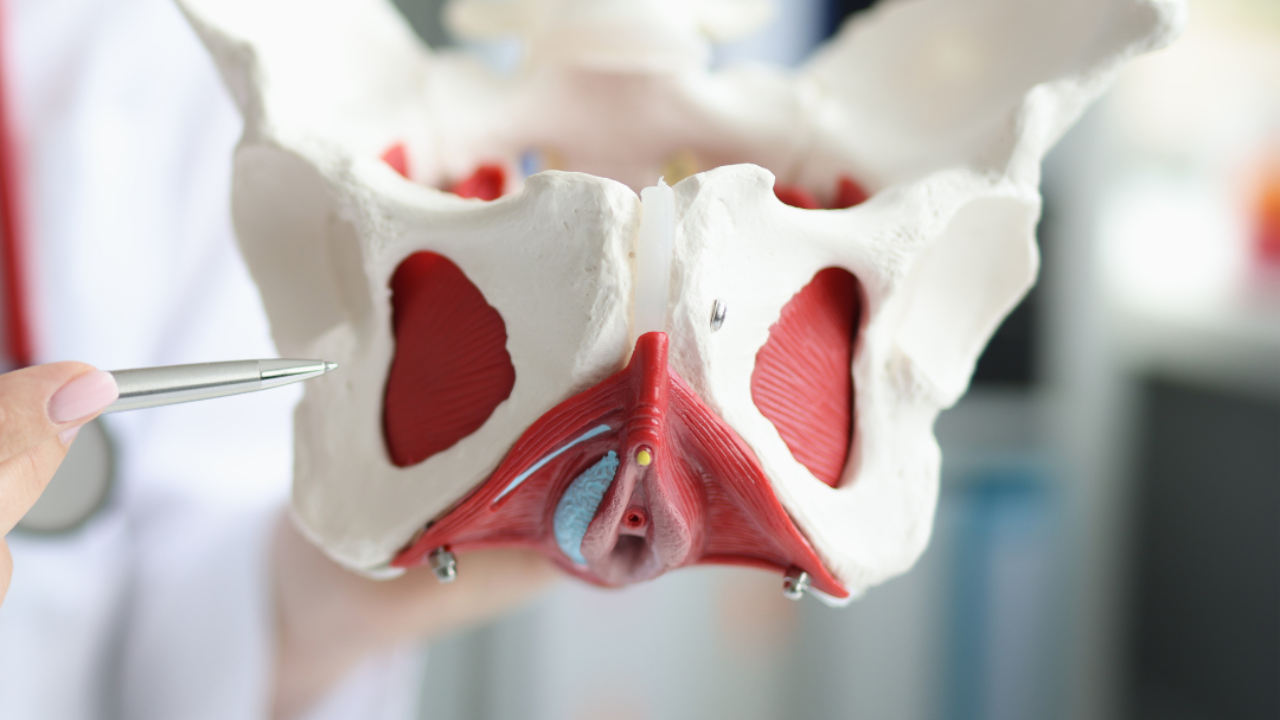
What Are Pelvic Floor Muscles?
Your pelvic floor is the foundation of how your lower body functions, feels, and responds. These muscles sit at the base of your pelvis, stretching from your pubic bone to your tailbone like a supportive sling. They hold up your bladder, uterus, and rectum. They keep you dry when you sneeze, support your spine when you walk, and contract during orgasm. They’re involved every time you go to the bathroom, every time you take a deep breath, and every time you feel turned on.
When they’re healthy, they contract and release like any other muscle. They engage when needed, lifting and supporting, and they soften when it’s time to let go. Most women don’t think about them until something starts to feel wrong. But these muscles are working in the background of everything from movement to intimacy, and when they stop working the way they should, the effects ripple through your whole body.
Causes of Pelvic Floor Tightness and Dysfunction

Overactivity
For a lot of women, an overactive pelvic floor means the pelvic floor is always doing something, even when it’s supposed to be resting. These muscles stay switched “on” out of habit. They clench when you’re focused. They lift when they’re supposed to soften. And over time, that constant gripping becomes your body’s new baseline.
Postural Issues
The way you carry your body affects how your pelvic floor feels, more than most people realize. If you’re sitting all day with your pelvis tucked under and your glutes off-duty, your pelvic floor picks up the slack. It’s trying to keep you stable, but it ends up holding more than it’s meant to.
Stress and Trauma
The pelvic floor is where we hold vulnerability. It’s where we brace when we feel exposed, overwhelmed, or unsupported. And because that tension is unconscious, it often goes unnoticed. You might walk through life with a body that’s always on edge, even if you appear calm on the outside.
Sexual Trauma
Sexual trauma creates a reflexive, full-body response, and much of that response is stored in the cervix and pelvic floor muscles. When an experience feels invasive, threatening, or violating, the body shifts into protection mode. In the pelvis, this shows up as immediate clenching. The muscles contract to guard the vaginal canal, while the cervix, which is highly innervated and sensitive to pressure, often becomes hypersensitive or completely shut down in response.
Physical Inactivity
Physical inactivity can cause the pelvic muscles to lose strength and tone over time. When we’re young, these muscles often function well without much conscious effort. But as we age, especially past our 30s, muscle mass and neuromuscular coordination naturally decline. Without intentional movement, the pelvic floor muscles become less responsive, and their ability to contract and relax properly begins to fade.
Childbirth and Pregnancy
Pregnancy and childbirth put direct, mechanical strain on the pelvic floor muscles, the connective tissues (fascia), and the pelvic organs they support.
During pregnancy, the growing uterus increases intra-abdominal pressure, which continuously pushes downward onto the pelvic floor. At the same time, hormonal changes, especially increased relaxin and progesterone, cause the ligaments and fascia in the pelvic region to become more elastic. This is necessary for delivery, but it also weakens the structural support system of the pelvic floor muscles.
Diaphragmatic Breathing: The Core of Pelvic Relaxation

Practicing diaphragmatic breathing means breathing deeply into your lower ribs and belly, not your chest. It activates your diaphragm, the dome-shaped muscle just below your lungs, which moves downward as you inhale. As the diaphragm lowers, it gently presses against your abdominal cavity, creating a natural, downward movement through your core, including your pelvic floor.
When your pelvic floor muscles are healthy, they respond to this movement by lengthening slightly on the inhale and returning on the exhale. This natural rhythm keeps the muscles mobile, responsive, and able to relax, which is exactly what’s needed when you’re dealing with pelvic floor tightness, hypertonic pelvic floor, or pelvic floor dysfunction.
Top 10 Pelvic Floor Release Exercises
1. Child’s Pose with Deep Breathing

Child’s pose gently stretches your spine, opens the hips, and gives your pelvic floor space to soften without having to “do” much. This position creates natural length through your lower back and pelvis. When your hips are open and your spine is supported, your pelvic floor muscles know they dont have to brace. That constant gripping you might be carrying starts to let go.
Child’s Pose is also one of the most supportive positions to use a yoni egg. With the hips open, spine long, and pelvic floor muscles gently lengthening, this posture allows the egg to sit naturally in the vaginal canal without pressure or strain. With the egg inserted, your pelvic floor learns to soften around the egg rather than grip against it. This helps retrain the muscles to release tension while staying connected, which is especially useful for addressing hypertonic pelvic floor or pelvic floor muscle dysfunction.
How to do it:
Start on your hands and knees. Bring your big toes to touch and open your knees wide. Slowly sink your hips back toward your heels. Let your chest rest down between your thighs and stretch your arms forward, or tuck them by your sides if that feels better. Rest your forehead on the mat or a pillow. Add cushions under your belly or hips if you need more support, this should feel safe and supported, not like a stretch you have to push into.
2. Happy Baby Pose

Happy Baby is one of those stretches that invites your whole pelvic area to stop gripping. This pose is an excellent pelvic floor stretch that opens the hips, lengthens the inner thighs, and gives deep access to the base of your pelvic floor, especially if you’re someone who tends to clench without realizing it.
This position opens the hip joints and stretches the muscles surrounding the vaginal canal and inner pelvis. Instead of doing the work of “relaxing,” you’re giving your body a shape that encourages release. The floor supports you. Gravity helps you. Your nervous system starts to downshift, and the gripping around your pelvic floor can finally ease.
How to do it:
Lie on your back. Bring your knees up toward your chest. Grab the outside edges of your feet with your hands, if that’s not accessible, ankles or calves work too. Open your knees wider than your torso and aim them toward your armpits. Keep your ankles stacked over your knees, shins perpendicular to the floor.
If your tailbone lifts off the floor, place a folded blanket or small cushion under your pelvis to support a neutral spine. As you hold the pose, inhale slowly and let your belly expand into the space between your thighs. Feel the pelvic floor subtly lower. On your exhale, soften, your shoulders, your jaw, your inner thighs. Let your breath create a gentle pulse of letting go.
3. Supine Butterfly with Rib Cage Expansion

This pose is about openness, through your hips, your belly, and your breath. It connects the two zones most women hold tension: the pelvic floor and the rib cage. When they move together, your body learns it can feel safe again.
This position creates natural expansion across the pelvic bowl. With your legs open and supported, your pelvic floor muscles aren’t bearing weight, they can simply be. Adding rib cage breathing encourages the diaphragm and pelvic floor to move as a team, instead of one bracing while the other moves. This resets your breath-to-pelvis connection, which is key to functional release. This pose also promotes pelvic floor relaxation by creating natural expansion across the pelvic bowl.
How to do it:
Lie on your back and bring the soles of your feet together, letting your knees fall open like butterfly wings. Use pillows or yoga blocks under your thighs if your hips feel strained, this is not about forcing a stretch. Place one hand on your belly and the other across your ribs. Let your spine rest into the floor, pelvis heavy and supported.
Take a deep inhale through your nose. Focus on lateral expansion, let your ribs move outward like an umbrella opening. Feel your belly and pelvic floor follow, gently expanding without effort. As you exhale, feel everything return inward. You’re training your system to coordinate movement and rest.
4. Hip Flexor Release
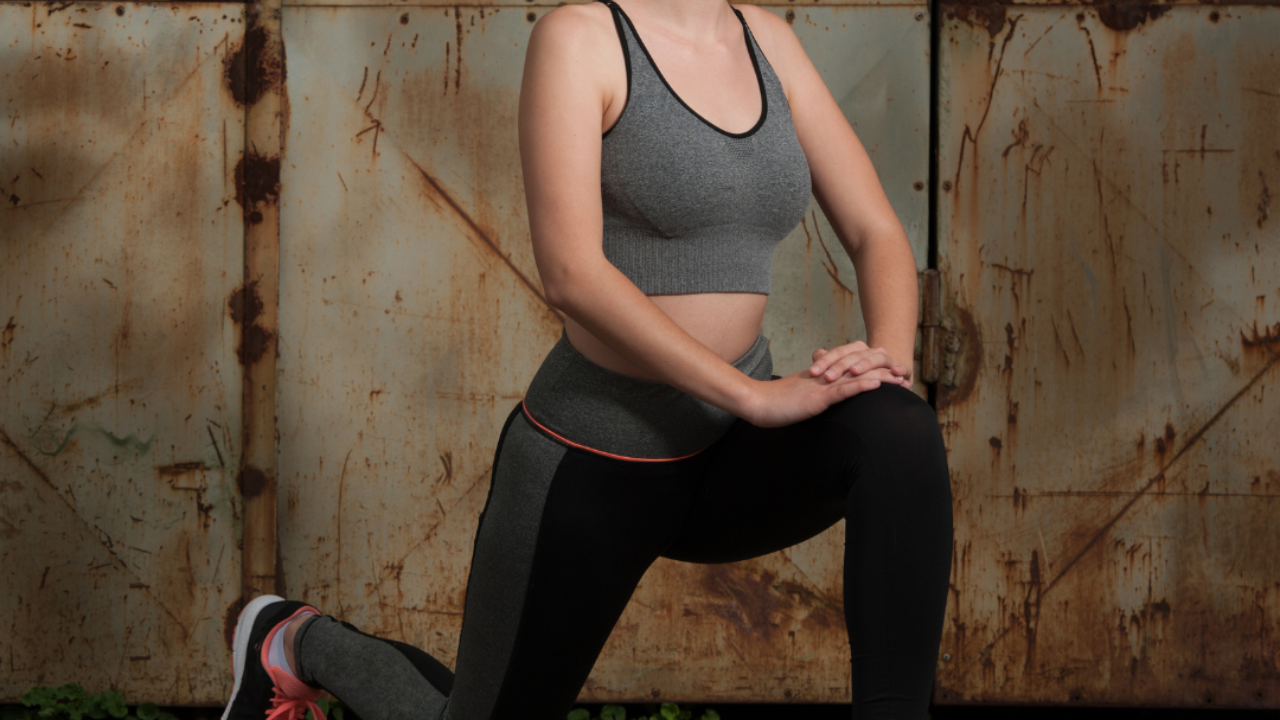
This is about softening the front of your pelvis, where so much tension gets locked in from sitting, bracing, and over-activating. When the hip flexors are tight, the pelvic floor is forced to work harder than it needs to. Releasing this tension creates space for the entire pelvic bowl to rest.
Tight hip flexors drag the pelvis into a forward tilt, which can trap the pelvic floor in a contracted state. This contributes to chronic gripping and tension. Releasing the hip flexors eases the front-body pull, helping the pelvic floor soften back to its true baseline, responsive, not reactive.
How to do it:
Come into a low lunge. One foot steps forward, the back knee stays grounded (add a cushion under it if needed). Gently shift your hips forward until you feel a stretch at the front of the hip on your back leg. Keep your spine long, think tall, not arched. Shoulders over hips. You want the pelvis to drop, not tilt. Hold here.
5. Tennis Ball Myofascial Release

This one targets the hidden pockets of tension that live deep in your glutes and outer hips, often referred to as myofascial trigger points. It’s where your body tries to “hold it all together”. Releasing these areas can create surprising relief in your entire pelvic floor.
Your glutes and pelvic muscles work as a team, when one is locked up, the other compensates. Targeting trigger points in the glutes helps unravel this compensation loop. The fascia softens, blood flow improves, and your pelvic floor gets the message: you don’t have to hold everything anymore.
How to do it:
Lie on your back, knees bent, feet flat. Slide a tennis ball under one glute (aim slightly off-center from your tailbone). Slowly lower your weight into the ball. When you find a tight, tender spot, pause. Stay still or gently rock side to side. Let your body guide the depth.
Once you’re on a pressure point, begin slow diaphragmatic breathing. Inhale and expand through your belly and ribs. On the exhale, visualize the tension dripping out of your hips, melting through the floor.
Once you’ve softened the outer hips and glutes, the next layer that often holds tension is the deep pelvic fascia, the thin, sticky webbing that wraps around your vaginal canal, cervix, and pelvic floor muscles. This fascia can dry out, thicken, and pull tight from years of clenching, trauma, or simply living in a body taught to “hold it all together.”
The Amrita Wand is designed to gently shear and mobilize these hidden adhesions. Its solid crystal structure gives the right amount of pressure to glide along the inner walls, loosening stuck tissue without bruising or irritating delicate areas. Working slowly with the wand, you can feel the subtle ‘melt’ as the fascia hydrates, regains elasticity, and releases stored tension that’s been muffling blood flow, sensation, and natural lubrication.
6. Deep Squats

This is full-body drop into gravity that awakens the pelvic floor, ankles, hips, and spine, all at once. It’s not about how low you can go, it’s about how much sensation you can allow. Deep squatting invites your pelvis to open in every direction. Deep squats are among the best pelvic floor exercises for promoting relaxation and mobility.
Deep squats decompress the pelvic bowl from below, instead of lifting or bracing, they lengthen and open. When the pelvic floor muscles are too tight, they lose mobility. This position reintroduces full-range movement and teaches your body that “open” isn’t dangerous, it’s necessary.
How to do it:
Stand with your feet slightly wider than hips, toes angled out. Bend your knees and sink down slowly, keeping your heels on the floor (use a rolled towel under them if needed). Your hips should sit between your ankles, not behind them. Elbows inside your knees, hands in prayer or lightly holding your shins. Spine long, tailbone heavy.
7. Perineal Massage
This is one of the most direct ways to soften a tense pelvic floor, gently, intentionally, and with full presence. The perineum (the soft space between the vaginal opening and the anus) is where pressure builds, especially in women who’ve experienced tearing, birth trauma, or chronic tightness. This massage brings relief and reconnection.
How to do it:
Start in a supported seated or reclined position. You can lie back with your knees bent, feet wide, or sit propped on a cushion with your knees gently apart. Use clean hands or apply a bit of yoni oil for glide. Use your thumbs or fingers to apply light, circular pressure to the area between your vaginal opening and anus. You can gently press down, then outwards in a U-shape, like tracing the bottom of a clock from 4 to 8.
Why Yoni Eggs Help with Pelvic Floor Release
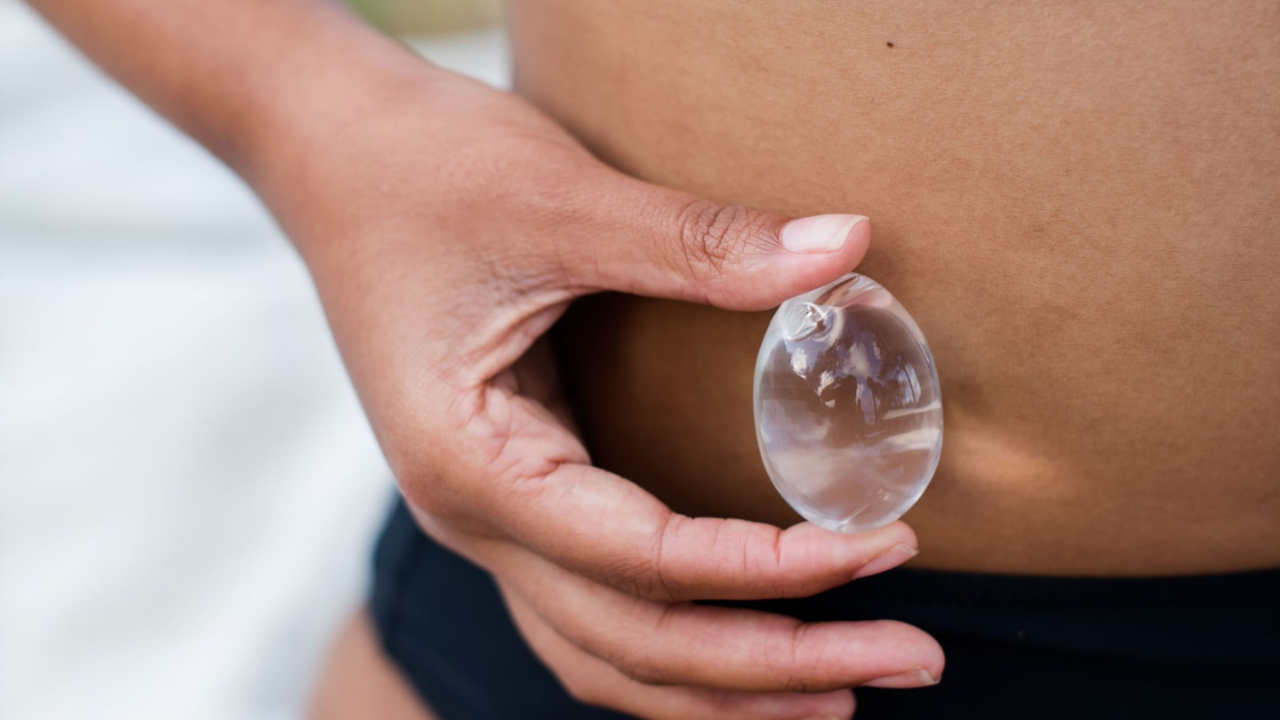
When your pelvic floor is gripping, numb, or stuck in old holding patterns, it’s hard to know what’s actually happening inside. A yoni egg gives your body something to feel around, a physical presence that gently wakes up the internal walls of your vagina and helps you locate exactly where you’re holding.
Instead of squeezing or performing pelvic contractions, the egg encourages your muscles to release around it. As you breathe low into your belly with the egg in place, you can feel the difference between areas that soften easily and areas that stay tight or resistant. Over time, this simple feedback helps retrain your nervous system to allow more relaxation, elasticity, and blood flow through the entire pelvic bowl.
Using Crystal Wands for Release
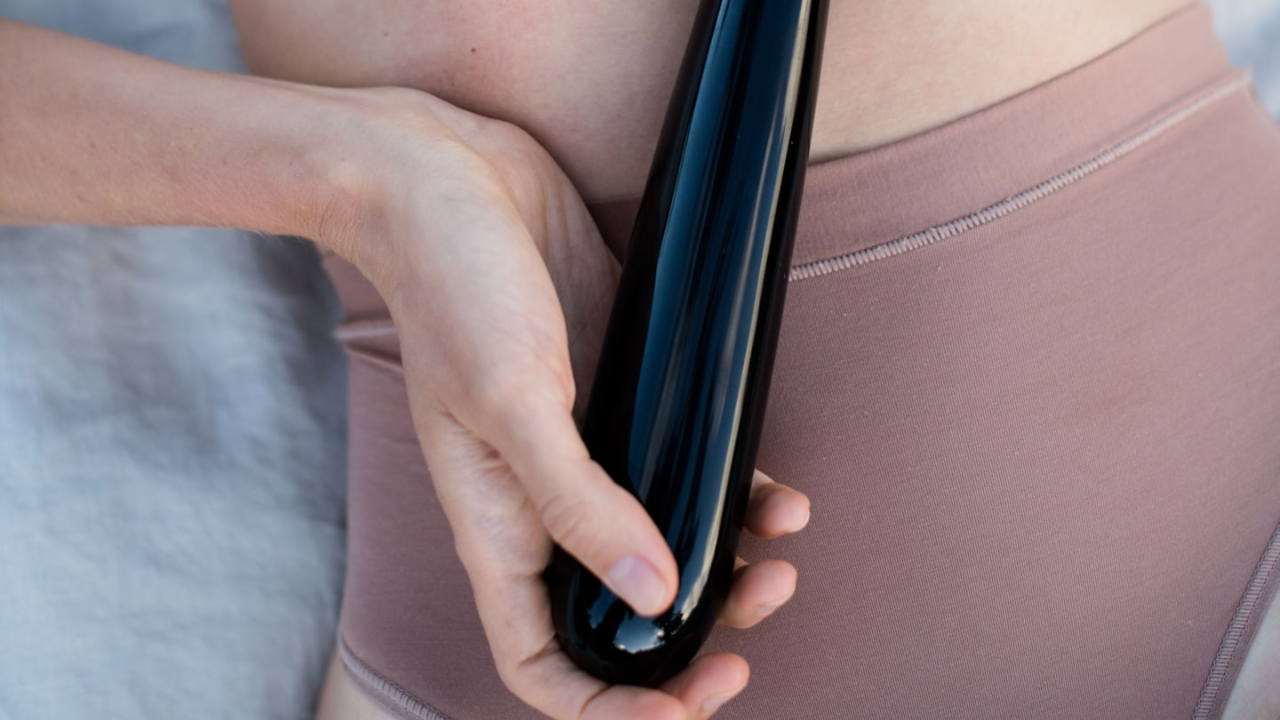
Unlike yoni eggs, which help build tone and awareness, a crystal pleasure wand is used to unwind. Most women have internal trigger points, tight bands of fascia or tenderness in the vaginal wall, that build up over time from things like birth, surgery, injury, or years of clenching without release. These spots often go unnoticed until touched, then you feel pressure, soreness, or numbness.
The Amrita Wand® is ideal for this kind of work. Its curved design makes it easy to reach areas that are hard to access with fingers alone, such as the inner vaginal sidewalls or the arc of the upper vaginal canal, without straining your hand or wrist. The solid weight and smooth surface allow you to apply slow, steady pressure directly to the tight spots, giving the fascia time to soften, hydrate, and reawaken sensation naturally.
Conclusion: Empower Your Pelvic Health Journey
Your pelvic floor is intelligent. It responds to your life, how you move, how you breathe, how you carry stress. When you bring conscious attention to this area, you give your body a chance to shift from tension into responsiveness.
Every small action matters. With the right tools and consistent care, your body becomes more supportive, more supple, more pleasurable to live in. You create the conditions for better sex, smoother cycles, stronger posture, and a deeper sense of comfort in your own skin.
Related Articles





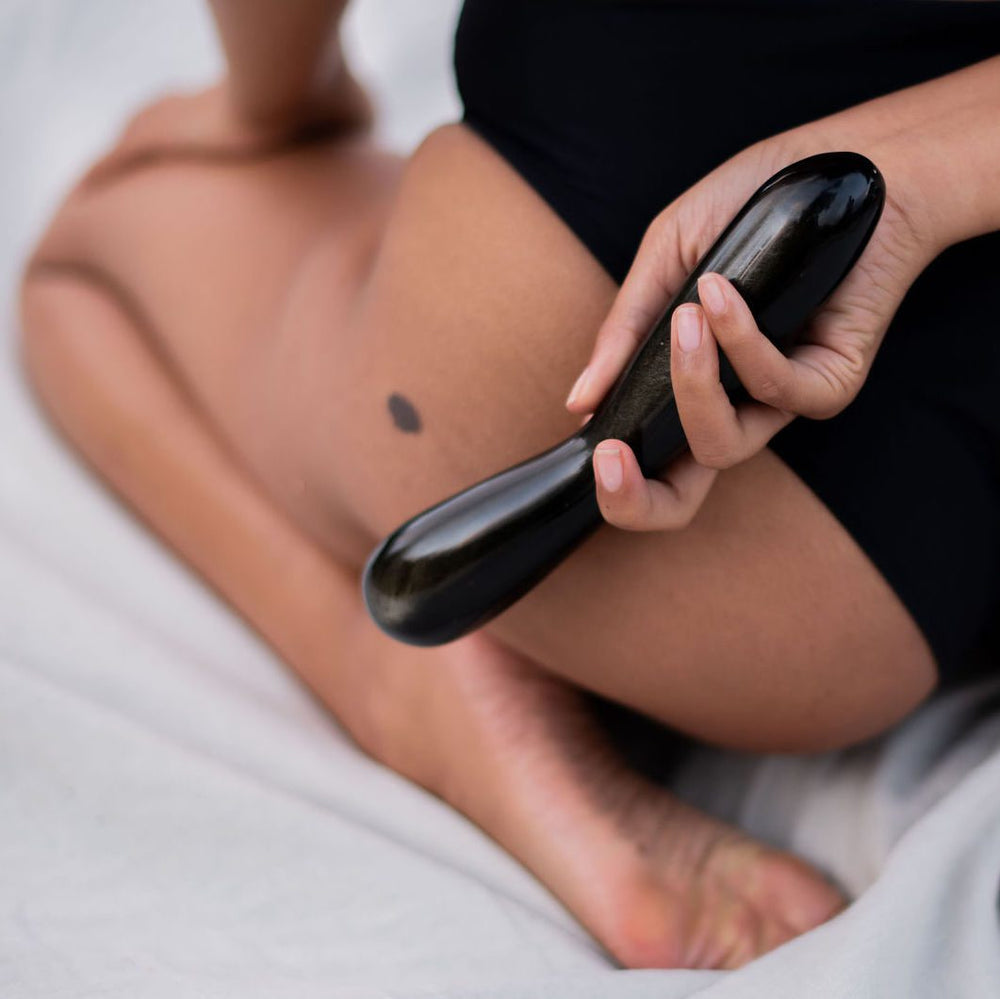







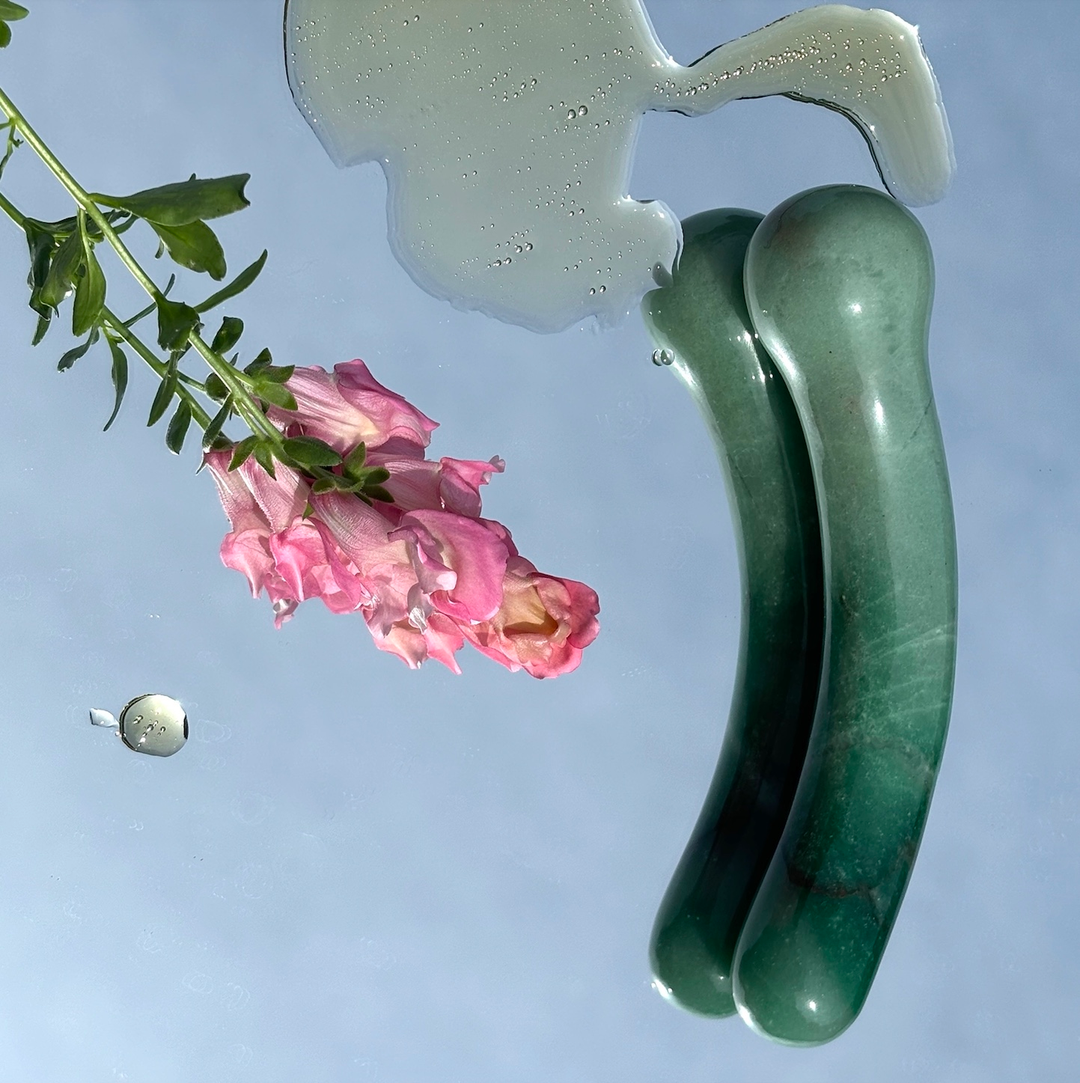
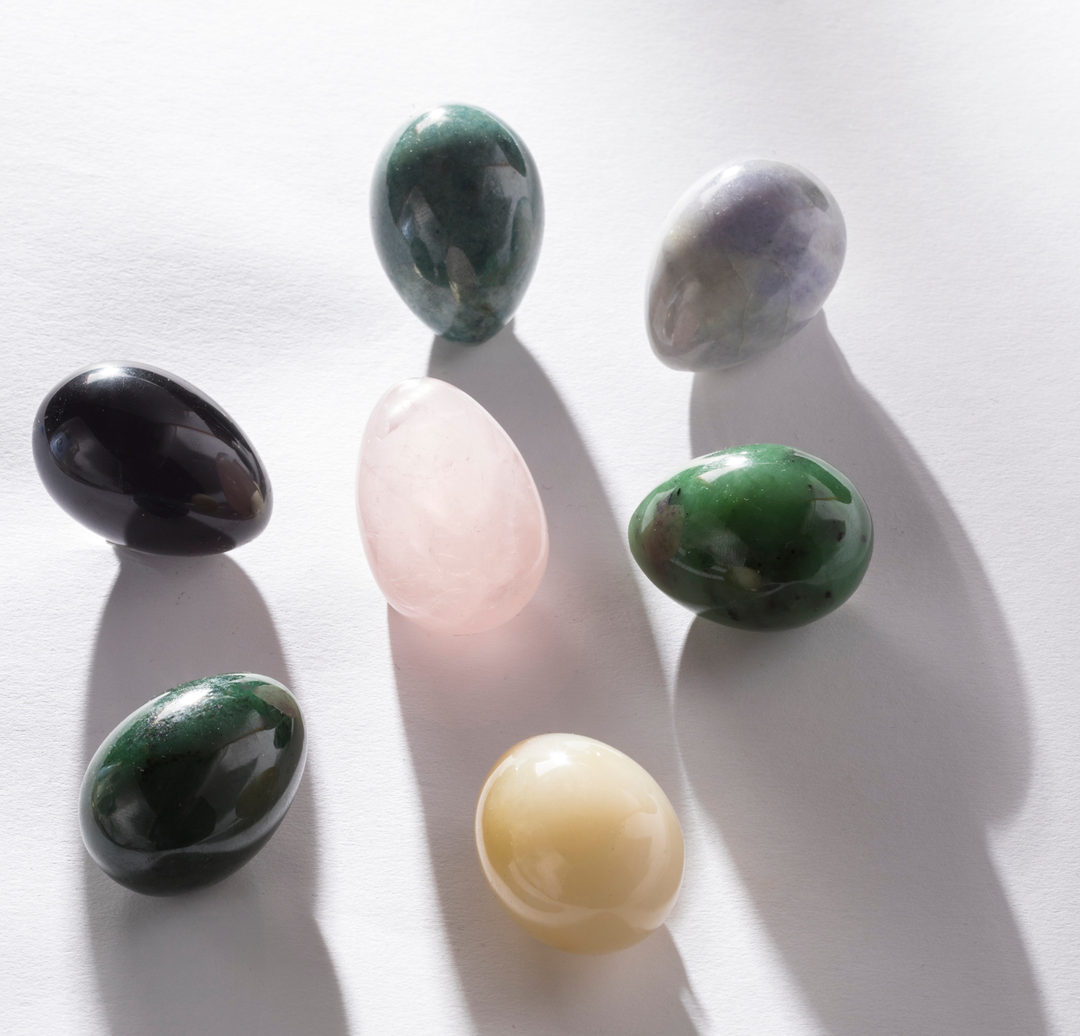
Leave a comment